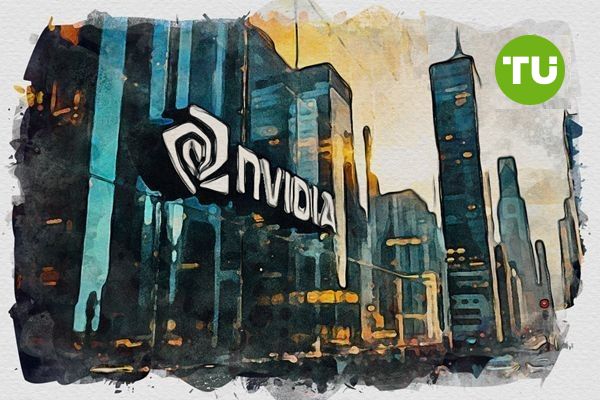Nvidia stock slips 1.4% as director plans $550 million sale
 At the macroeconomic level, Nvidia’s position is influenced by inflation, interest rate expectations, and monetary policy
At the macroeconomic level, Nvidia’s position is influenced by inflation, interest rate expectations, and monetary policy
Nvidia (NASDAQ: NVDA) is currently trading at $139.99 as of June 6, 2025, a minor decline of 1.4% on the day, after a volatile session that saw prices ranging between $137.88 and $143.97.
Highlights
- Nvidia stock is showing signs of short-term exhaustion with an RSI above 70 and price nearing key resistance at $145.
- A director's proposed $550 million share sale adds to investor caution amid ongoing U.S.-China trade risks.
- Despite this, strong demand for AI infrastructure supports a bullish long-term outlook.
The stock has been on a pronounced upward trend over the past few months, driven by robust earnings and continued enthusiasm for artificial intelligence. The 50-day moving average now stands at $128.50, while the 200-day moving average is $115.20. With the price well above both these trend lines, Nvidia remains technically bullish over the medium term. However, such separation from the moving averages also implies a risk of mean reversion in the near term.
The Relative Strength Index (RSI) is currently at 72, which places it firmly in overbought territory. This suggests that the rally may be overextended and that a period of consolidation or a pullback could be imminent. It is worth noting that RSI levels above 70 historically precede profit-taking among momentum traders. The MACD (Moving Average Convergence Divergence) still shows a bullish alignment, with the MACD line above the signal line, though the histogram bars are narrowing. This flattening indicates waning upward momentum, which often precedes a reversal or sideways action.

NVDA stock price dynamics (April 2025 - June 2025). Source: TradingView
In terms of price levels, immediate resistance lies at $145.00, just below the intraday high of $143.97. If Nvidia breaks through this level with strong volume, it could test the psychological barrier of $150.00, which also aligns with its recent all-time highs. However, failure to breach resistance could trigger short-term selling pressure. Support levels are observed at $135.00 and more firmly at $130.00, both of which previously served as pivot zones during the stock’s recent run-up. A drop below $130.00 would suggest a breakdown from the current bullish channel and open room for deeper declines toward the $122.00 range.
Insider selling and regulatory risks heighten caution
The broader context around Nvidia has shifted slightly after a company director proposed selling $550 million worth of stock. This insider activity, while not indicative of company performance per se, often acts as a red flag to market participants. Insider sales of this scale tend to signal caution regarding near-term valuation, particularly after a major run-up in price. Combined with Nvidia's lofty valuation multiples, this has introduced a degree of unease among institutional investors.
Adding further pressure are geopolitical risks tied to Nvidia’s large business exposure in China.U.S. export restrictions on advanced AI chips have already weighed on revenue projections, with the company guiding for up to $8 billion in lost sales as a result of curbs on shipments to China. While Nvidia has taken steps to reorient supply toward domestic and other international markets, the gap remains material. Nevertheless, growth in data center and AI infrastructure segments continues to outpace expectations, led by strong demand for its Blackwell architecture.
At the macroeconomic level, Nvidia’s position is influenced by broader market dynamics, including inflation, interest rate expectations, and monetary policy. Though the S&P 500 and Nasdaq have remained resilient, the Federal Reserve’s hawkish tone in recent statements has investors on edge. High-growth tech stocks with premium valuations, such as Nvidia, are particularly sensitive to rate hikes, as higher yields impact future cash flow discounting models. This creates a complex environment for Nvidia’s stock in the short term, where strong fundamentals clash with shifting investor sentiment and macro uncertainty.
Consolidation ahead, with bullish bias intact
Considering both the technical setup and fundamental factors, Nvidia’s stock is likely to enter a short-term consolidation phase. While long-term momentum remains intact, several warning signals—overbought RSI, narrowing MACD, insider selling, and weakening volume—suggest limited upside in the immediate term. A retracement toward the $135.00 support level would be healthy and expected. Should that level fail to hold, the next downside target lies near $130.00.
On the upside, breaking past $145.00 would be a bullish signal, especially if confirmed by a spike in volume. In such a scenario, Nvidia could retest the $150.00 area. However, this requires a supportive news flow and easing macro pressures. If broader markets remain stable and earnings forecasts hold, a renewed bullish breakout later in June remains possible.
Despite geopolitical risks like potential U.S. tariffs on Chinese semiconductors, Nvidia remains resilient due to its diversified supply chain and premium product portfolio. Its data center segment led explosive year-over-year revenue growth, solidifying its role as the company’s top revenue driver.













































































































































